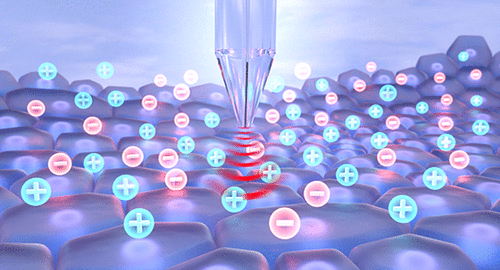当前位置:
X-MOL 学术
›
Chem. Rev.
›
论文详情
Our official English website, www.x-mol.net, welcomes your
feedback! (Note: you will need to create a separate account there.)
Scanning Ion Conductance Microscopy
Chemical Reviews ( IF 51.4 ) Pub Date : 2020-12-09 , DOI: 10.1021/acs.chemrev.0c00962 Cheng Zhu 1 , Kaixiang Huang 1 , Natasha P Siepser 1 , Lane A Baker 1
Chemical Reviews ( IF 51.4 ) Pub Date : 2020-12-09 , DOI: 10.1021/acs.chemrev.0c00962 Cheng Zhu 1 , Kaixiang Huang 1 , Natasha P Siepser 1 , Lane A Baker 1
Affiliation

|
Scanning ion conductance microscopy (SICM) has emerged as a versatile tool for studies of interfaces in biology and materials science with notable utility in biophysical and electrochemical measurements. The heart of the SICM is a nanometer-scale electrolyte filled glass pipette that serves as a scanning probe. In the initial conception, manipulations of ion currents through the tip of the pipette and appropriate positioning hardware provided a route to recording micro- and nanoscopic mapping of the topography of surfaces. Subsequent advances in instrumentation, probe design, and methods significantly increased opportunities for SICM beyond recording topography. Hybridization of SICM with coincident characterization techniques such as optical microscopy and faradaic electrodes have brought SICM to the forefront as a tool for nanoscale chemical measurement for a wide range of applications. Modern approaches to SICM realize an important tool in analytical, bioanalytical, biophysical, and materials measurements, where significant opportunities remain for further exploration. In this review, we chronicle the development of SICM from the perspective of both the development of instrumentation and methods and the breadth of measurements performed.
中文翻译:

扫描离子电导显微镜
扫描离子电导显微镜 (SICM) 已成为生物学和材料科学中界面研究的多功能工具,在生物物理和电化学测量中具有显着的实用性。SICM 的核心是纳米级电解质填充的玻璃移液管,用作扫描探针。在最初的构想中,通过移液管尖端和适当的定位硬件操纵离子电流提供了记录表面形貌的微米和纳米级绘图的途径。随后仪器、探针设计和方法的进步显着增加了 SICM 除了记录地形之外的机会。SICM 与光学显微镜和法拉第电极等一致表征技术的结合,使 SICM 成为广泛应用的纳米级化学测量工具的前沿。现代 SICM 方法成为分析、生物分析、生物物理和材料测量领域的重要工具,在这些领域仍有进一步探索的重要机会。在这篇综述中,我们从仪器和方法的发展以及所进行的测量的广度的角度记录了 SICM 的发展。
更新日期:2020-12-09
中文翻译:

扫描离子电导显微镜
扫描离子电导显微镜 (SICM) 已成为生物学和材料科学中界面研究的多功能工具,在生物物理和电化学测量中具有显着的实用性。SICM 的核心是纳米级电解质填充的玻璃移液管,用作扫描探针。在最初的构想中,通过移液管尖端和适当的定位硬件操纵离子电流提供了记录表面形貌的微米和纳米级绘图的途径。随后仪器、探针设计和方法的进步显着增加了 SICM 除了记录地形之外的机会。SICM 与光学显微镜和法拉第电极等一致表征技术的结合,使 SICM 成为广泛应用的纳米级化学测量工具的前沿。现代 SICM 方法成为分析、生物分析、生物物理和材料测量领域的重要工具,在这些领域仍有进一步探索的重要机会。在这篇综述中,我们从仪器和方法的发展以及所进行的测量的广度的角度记录了 SICM 的发展。











































 京公网安备 11010802027423号
京公网安备 11010802027423号